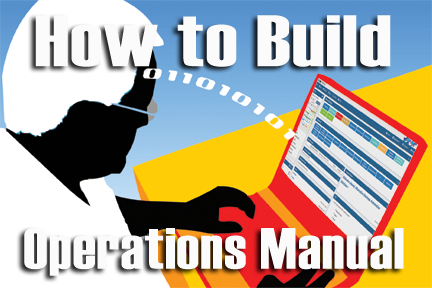Systematize Your Business to Run Without You
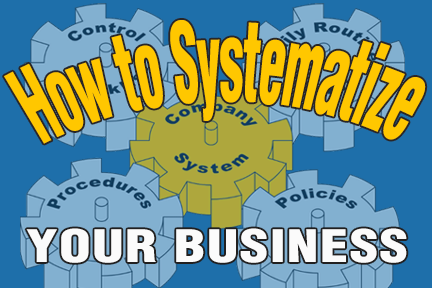 Systematize a business, to run without you being on site, in a matter of months. It may sound too good to be true, but it’s done every day by those with courage and vision. Again, you can accomplish this life changing mission in short order, depending on your commitment.
Systematize a business, to run without you being on site, in a matter of months. It may sound too good to be true, but it’s done every day by those with courage and vision. Again, you can accomplish this life changing mission in short order, depending on your commitment.
Therefore, the decision to DO IT is the utmost importance!
To that end, count the cost by weighing your pain against the benefits of successful systematization. At that point, if deciding to move forward, don’t look back!
In fact, BURN THE BOATS, so no one returns to the “old way” of running the business.
To be sure, the journey is well worth the effort. However, there will be opposition. But don’t lose heart; many small business owners have completed their mission of Business Organization Through Systematization.
It’s important to realize, with every frustration encountered when you systematize a business, the answer is always: there’s a system to fix it.
Therefore, to systematize a business, you must stay focused on mission, no matter what! Moreover, keep your DREAM alive! That dream of having the FREEDOM to do the things you’ve always wanted to do, but never had the time.
In fact, isn’t that the reason you decided to own your own business? Freedom?
Systematize a Business Starts by Naming Departments
Step one, is to categorize your business into Departments. However, don’t make the mistake of categorizing your company based on your current size or present operations. Envision your company five years, ten years, and even twenty years from now. Also, visualize your company with five, ten, twenty-five employees, and so on.
With that in mind, systematize a business for the future! As a result, you won’t have to back-track when growth comes suddenly.

Map How Production or Service Flows
Now, take the time to map the step-by-step process of how a job or a service you provide to customers flows, from start to finish. Example, from the time the client contacts you and awards the job or service, until you complete it. This map will become a Master Control Checklist for your operations.
This is also known as, business process management.
See examples of prompts on the partial Master Control Checklist below:
Notice the Document Reference Numbers circled in red. Sometimes you’re unable to place all the necessary action prompts directly on a Master Control Checklist, due to space constraints. Therefore, you must reference other Quality Assurance checklists, Procedures, and/or Policies, etc. Moreover, this method is necessary when a complicated manufacturing or service process is involved.
Note: Your process may be very different from the one below.
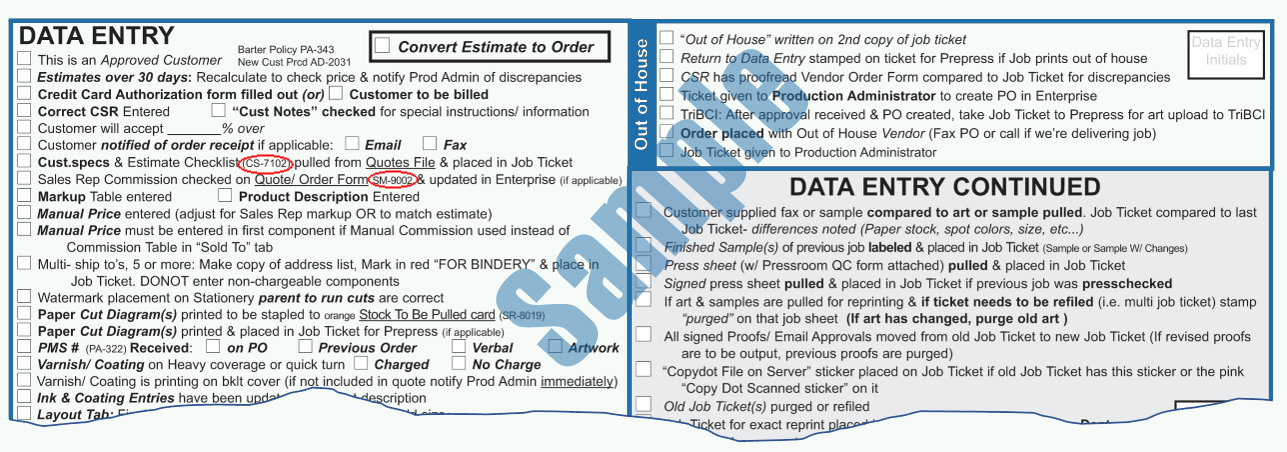
Develop Quality Assurance Checklists
The only way to guarantee quality and service is to have a system in place that ensures quality performance at each stage of production, or each step in the service provided. Therefore Quality Management is critical.
With a checklist, your business will save thousands of dollars by eliminating stupid errors. A checkbox with a prompt is a call to action! This ensures humans don’t forget any crucial step in the production or service process. Think of an airline pilot’s “takeoff & landing checklist,” and the importance of not missing a step. SEE TWO SAMPLES BELOW
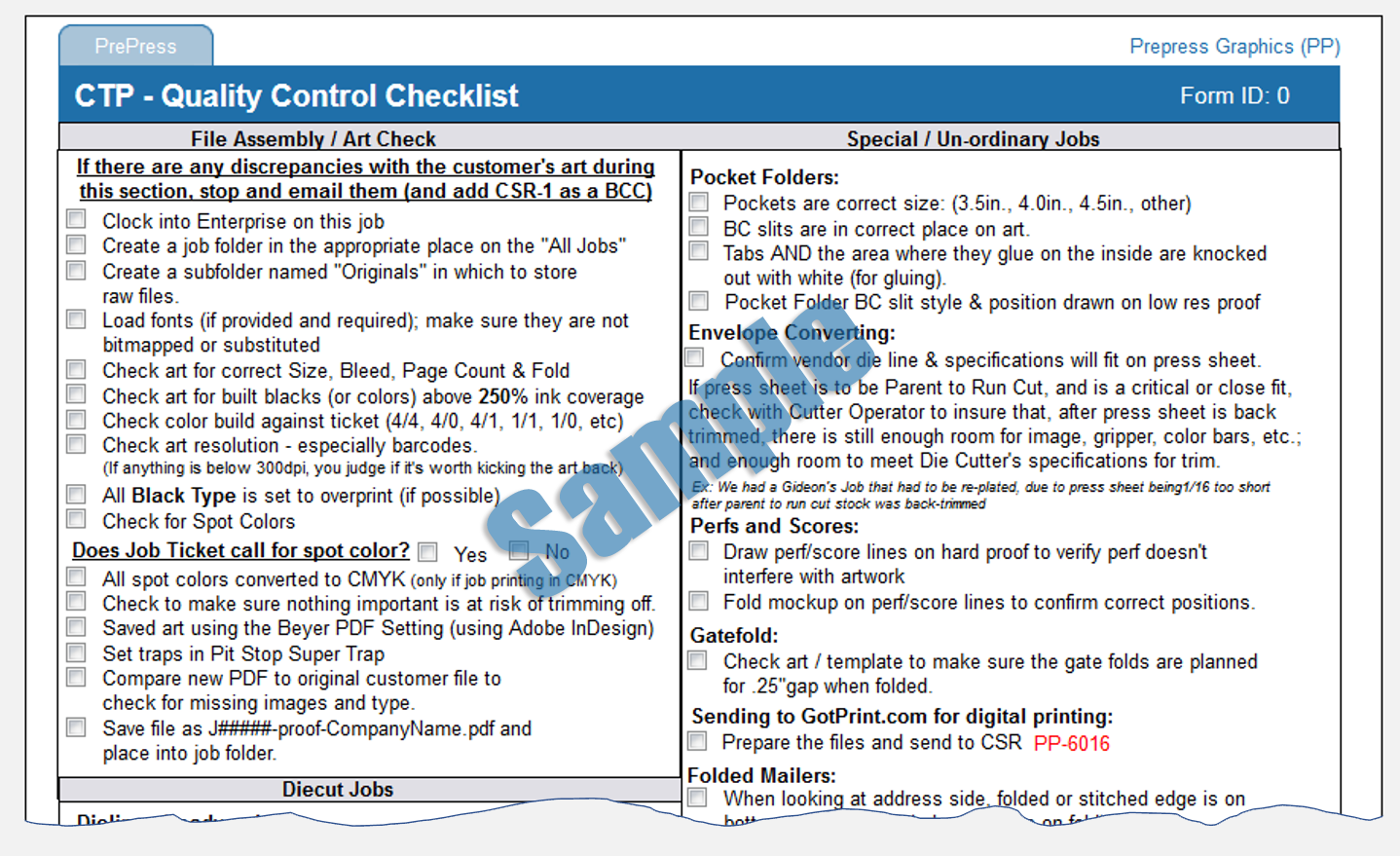

Procedures to Avoid Constant Re-Training
Training and re-training personnel can be time consuming and costly. It is particularly frustrating in those businesses that experience high rates of employee turnover. For this reason, written procedures, policies and other SOP documents is a money-saving investment to avoid re-training. To be clear, procedures are NOT checklists; they are simply a step-by-step map of how to complete a task.. However, if a procedure is critical to production or service to avoid errors, then turning a procedure into a Quality Assurance Checklist is the best practice.

Develop Daily Routine Checklists for Key Employees
A Daily Routine Checklist is similar to a Job Description, developed into a checklist of call-to-action prompts. These step-by-step prompts are a list of daily responsibilities given to an employee when hired. As a result, this checklist ensures completion of every important daily responsibility. Because, when daily tasks are NOT completed, important work backs up. Consequently, tasks back-ups, causes stress for others affected by the uncompleted work.
For example, unfinished filing, jobs and services not invoiced, inventory not ordered, etc.
These online checklists are great tools for owners to see-at-a-glance, what employees do from the time they arrive, until leaving at the end of day. In addition, a Daily Routine Checklist is a wonderful training tool for new employees who assumes the current employee’s position.
With this in mind, consider an employee’s position as a “SYSTEM”, i.e. Production Manager System or Bookkeeper System
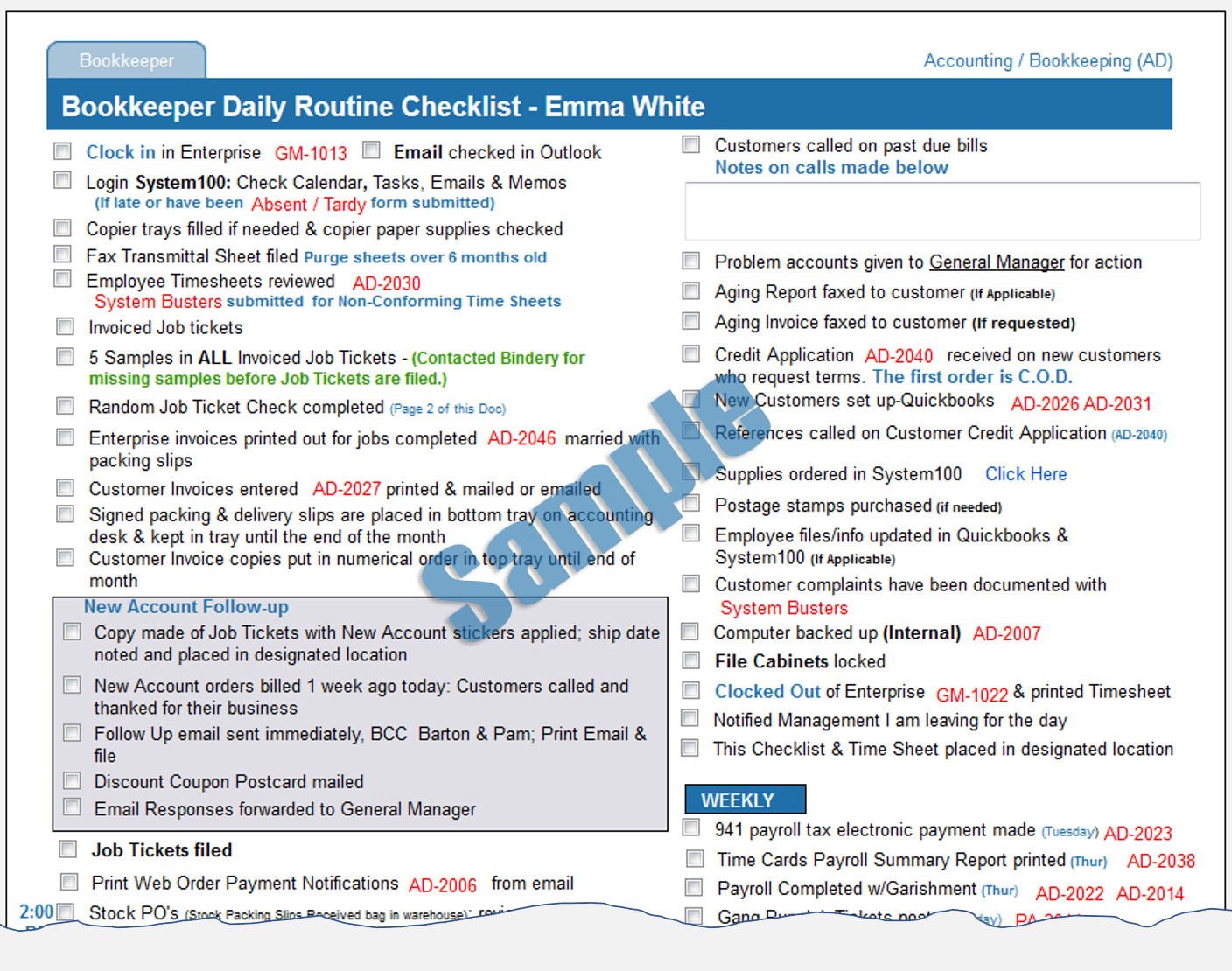
Policies For Responding to Various Circumstances
Without written policies, people make shoot-from-the-hip decisions, which can liable a company. Consequently, clients, vendors, and employees don’t know how to react to various situations without proper policies. Therefore, for everyone to respond in the same manner to common situations, policies are critical.
The only person(s) that should have authority to over-ride a policy, should be management.
In a very systematized company, there should be a system to over-ride any part of the system,if necessary.



